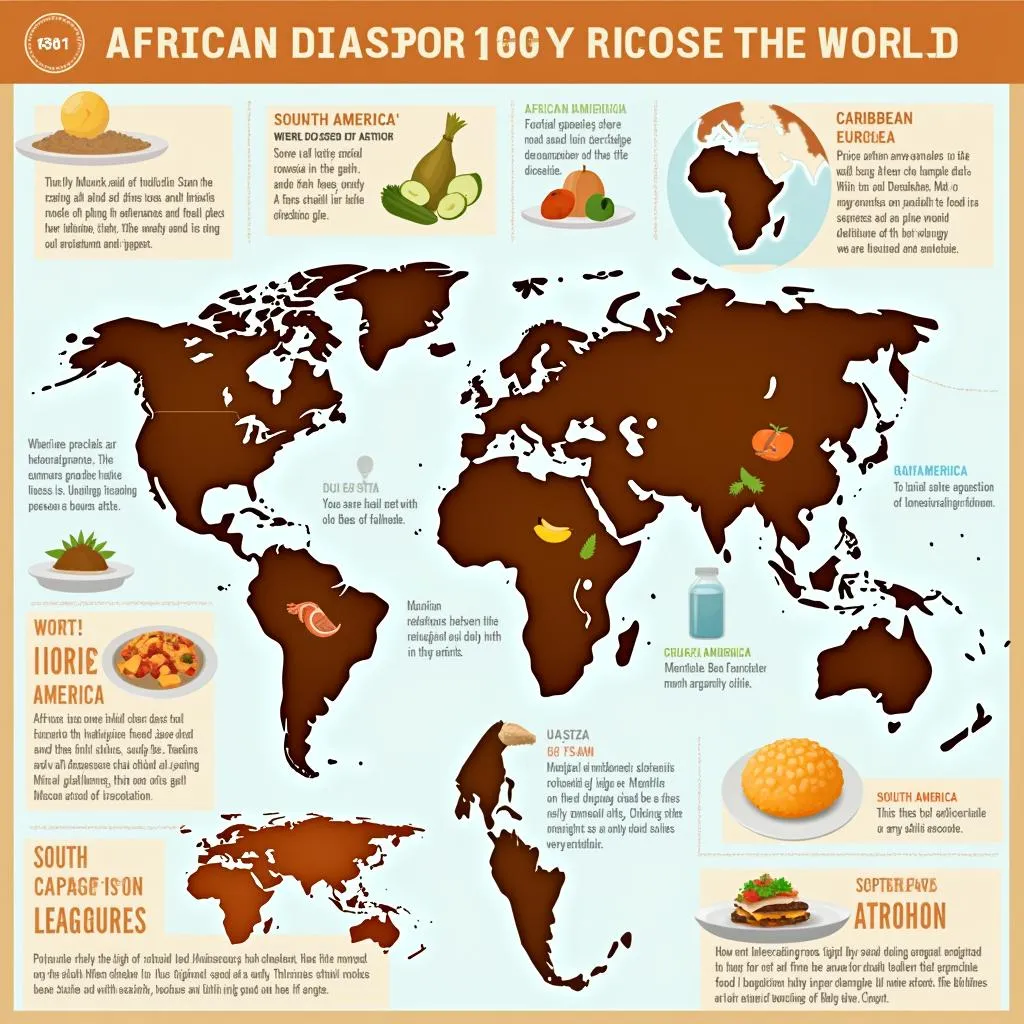A Taste of Home: Exploring the Rich History of African Diaspora Food
African Diaspora Food is more than just a collection of recipes; it’s a testament to the resilience, creativity, and cultural fusion born from a complex history. This culinary journey reflects the forced migration of Africans during the transatlantic slave trade and its lasting impact on food cultures across the globe.
From the Caribbean jerk chicken to the soul food staples of the American South, the influence of African culinary traditions is undeniable. These dishes, often adapted to available ingredients and local tastes, tell stories of survival, adaptation, and the preservation of cultural heritage through generations.
 Map of African Diaspora Food
Map of African Diaspora Food
The Transatlantic Slave Trade: A Catalyst for Culinary Fusion
The transatlantic slave trade, a dark chapter in human history, played a pivotal role in shaping African diaspora food. As millions of Africans were forcibly displaced from their homelands, they carried with them their culinary knowledge and traditions. In the Americas, they were forced to adapt their cooking techniques and recipes to the ingredients available to them. This led to the innovative use of indigenous crops like corn, beans, and squash, alongside ingredients from Europe and Asia, resulting in a unique and flavorful fusion of culinary influences.
 African Slaves Cooking in America
African Slaves Cooking in America
From Africa to the Americas: Tracing Culinary Roots
The influence of West African cuisine is particularly prominent in many diaspora dishes. Staples like rice, okra, black-eyed peas, and yams, often found in West African cooking, became foundational ingredients in Caribbean, South American, and North American cuisines. The use of spices and seasonings, like scotch bonnet peppers, ginger, and turmeric, also reflects West African culinary traditions, adding depth and complexity to diaspora dishes.
Soul Food: A Delicious Legacy of Resilience
In the United States, African diaspora food found its expression in what we know today as Soul Food. This cuisine, originating in the American South, is deeply rooted in the resourcefulness of enslaved Africans who transformed humble ingredients into nourishing and flavorful meals. Dishes like fried chicken, collard greens with smoked meat, and macaroni and cheese are not only culinary delights but also powerful symbols of African American identity and resilience.
 Soul Food Family Gathering
Soul Food Family Gathering
The Caribbean Connection: A Tapestry of Flavors
The Caribbean islands, another significant destination of the transatlantic slave trade, boast a vibrant and diverse culinary landscape deeply influenced by African traditions. From Jamaican jerk chicken, marinated in a fiery blend of scotch bonnet peppers and spices, to Trinidadian callaloo, a flavorful stew made with leafy greens, coconut milk, and often crab or shellfish, Caribbean cuisine is a testament to the fusion of African, indigenous, and European culinary influences.
Beyond the Plate: Food as a Celebration of Culture
African diaspora food transcends geographical boundaries, serving as a powerful connector to heritage and identity for communities scattered around the globe. Food festivals, home-cooked meals, and family recipes become vehicles for storytelling, passing down culinary traditions, and honoring the resilience of ancestors.
Conclusion
From the shores of West Africa to the Americas and beyond, the journey of African diaspora food is a testament to the power of culinary traditions to endure and evolve. Exploring these diverse and delicious cuisines offers not only a tantalizing culinary experience but also a deeper understanding of history, culture, and the enduring legacy of the African diaspora.

